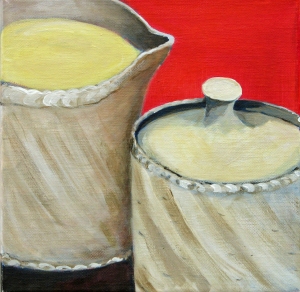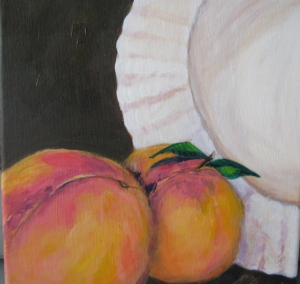Apple, acrylic, 14 x11 ($125 + $10 shipping)
I just saw a fascinating documentary, “Tim’s Vermeer,” produced by Penn & Teller. It’s the story of Tim, who theorizes that Vermeer used a camera obscura to create his amazingly realistic paintings. This theory is well known, but there are problems with it. Tim set out to overcome the problems. He made and modified a camera obscura, and actually built the entire scene of “The Music Lesson.” He then painted the scene, using his invention. He proved that Vermeer could have similarly used his own camera obscura to achieve the great level of detail in his paintings. At the end of about 130 days, Tim had recreated an exact replica of Vermeer’s painting.
Yet something was still missing from the painting. It lacked the magic that Vermeer brought to his work. Why is that?
An artist must master her craft, surely. More than that, though, the artist uses composition, the effects of light and color, the choice of subject matter, to elevate the craftman-like work to the level of art. It’s seeing ordinary things in a different way. Maybe it’s a sort of magic, after all.



